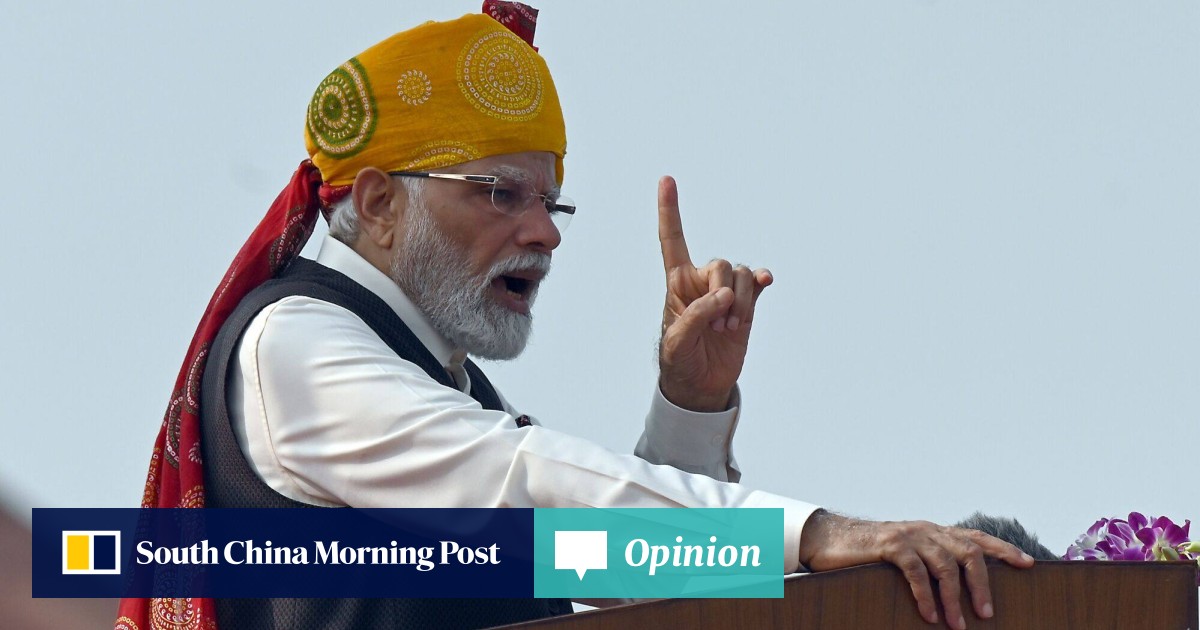Last year, as Prime Minister Narendra Modi celebrated 75 years of India’s independence from British rule, he called on the nation to “
dominate the world”. Earlier this week, once again at the Red Fort, he evoked “Amrit Kaal” – a crucial era when the gates of opportunity open.
His “reform, perform, transform” mantra involves dreaming big. He was possibly dreaming of those halcyon days up to 1870 when India and China counted as the world’s two largest and most powerful economies.
But a dream does not make a plan. And in the nine years since Modi came to power, his plans to propel India to the top table of the world’s most powerful economies remain largely that – plans.
Harvard University’s Graham Allison reminded us in a recent Foreign Policy report that about a decade ago, the late Singapore leader Lee Kwan Yew had said India would never catch up with China and would always remain “the country of the future”. Lee said: “Do not talk about India and China in the same breath” – throwing the gauntlet down to those who see India
biting at China’s heels and cheer India on in hopes of hobbling China’s ascent.
To be fair to Modi, his government’s economic performance is respectable after decades of stagnation and disappointment. India’s gross domestic product has grown by about 6 per cent every year on average since 2014, reaching an all-time high of 9.1 per cent last year – impressive in light of the upheavals of the Covid-19 pandemic and recession in many parts of the world.
But a wide range of structural reforms are needed if India is to escape the shackles of its economic past. These include the
grip of caste, bureaucratic friction, impenetrable tax rules, still-chronic protection of local business magnates and import tariffs that are among the world’s highest.
Any country rising from such a low base must recognise that it will take many decades to achieve anything the late Lee would regard as parity with China – and that this is nothing to be ashamed of. Goldman Sachs predicted last month that by 2075, China would become the world’s largest economy (US$57 trillion), with India (at US$52.5 trillion)
overtaking the US (at US$51.5 trillion).
Columbia University’s Arvind Panagariya has similar projections, calculating recently in Time magazine that if India’s real GDP grew at 8 per cent a year into the 2040s and 5 per cent after that, and if the US continues to grow on average by 2 per cent a year, India would overtake the US in 2073.
These are big “ifs”, even for those brave enough to make forecasts a half-century away. And huge bodies of data point India towards a more humdrum trajectory. According to Allison in Foreign Policy, back in 2000, China and India had economies worth less than US$2 trillion each. It took China five years to pass the mark and India 14 years. Last year, India’s economy was worth US$3.4 trillion – a fraction of China’s US$18.3 trillion.
It will take many years of stellar economic growth for India to begin matching China in economic importance, and no amount of miraculous thinking or
“China plus one” investment is likely to accelerate that.
Also, many other important economic indicators remain problematic. India accounted for about 1 per cent of global manufacturing in 2000, compared with 7 per cent for China. By last year, India’s share had grown to 3 per cent against China’s 31 per cent. In 2000, India accounted for just 1 per cent of the world’s exports, and China 2 per cent. By last year, China accounted for 15 per cent of global exports against India’s share of 2 per cent.
World’s largest population: why it could be a headache for India
India enthusiasts celebrate the
youthfulness of India’s population, but ignore the reality that this is a problem rather than an advantage when they are poorly educated or even illiterate. To accommodate them, India must produce an estimated 90 million new jobs before 2030.
Allison reminds us that China produces twice as many STEM-qualified (in science, technology, engineering and mathematics) graduates as India, spends almost three times the percentage of its GDP on research and development, and produces 65 per cent of the world’s artificial intelligence patents (vs India’s 3 per cent).
As Bloomberg noted in April: “India is far behind China in key aspects important for manufacturing that include infrastructure, bureaucracy, attention to detail and even a sense of urgency.”
Supporters of India in search of a “hobble China” narrative have been encouraged by companies such as Apple and its main Taiwanese manufacturer Foxconn, which have made tentative steps to build investments in India, but ignore the challenges they have faced, and the reality that China remains their main manufacturing base.
They have ignored the withdrawals of companies like the Royal Bank of Scotland, Harley-Davidson and Citibank, and the many other companies with plans on hold. They have tended to celebrate the deliberate obstacles to prospective investment in China, even where China is a natural partner and the benefit of collaboration is huge.
Rather than harbouring dreams of dominating the world, India’s policymakers would benefit us all by opening up their economy and recognising that even if India does not surpass China, it can still be a huge driver in the global economy. China and India together account for one third of the world’s population, one third of the global consumer class, and a quarter of all consumer spending in purchasing power parity terms.
The 21st century may not be India’s century, but it is almost certainly Asia’s. Washington needs to come to terms with that, and perhaps New Delhi does too.
Even the most India-positive forecasts expect it to spend half a century to overtake the US economically, to take second place behind China. But with reforms, India it can still be a huge driver in the global economy.

www.scmp.com








